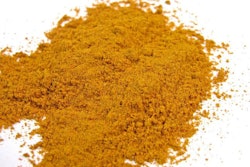
A quick look through any technical magazine of our industry, or a walk through any major commercial exhibition or scientific event, will quickly reveal an astonishing truth. Our industry revolves around the world of feed additives, and for several good reasons. These products are profitable, sophisticated and promise great returns. As a result, marketing in our industry, too, which is expensive if done correctly, focuses heavily on additives. In fact, one will be hard pressed to find a serious marketing project on anything else but additives. We focus so hard on additives that we have neglected other ingredients, such as linseeds, for example.
Perhaps this is because straight ingredients (or raw materials) have been eclipsed by the power of corn and soybean meal. It is true, farm animals never complained with a corn and a soybean meal diet. But that is not necessarily always the most profitable solution, especially when locally grown alternatives and/or agro-industrial byproducts abound. Here, we have to remind ourselves again that marketing is expensive and, thus, such local opportunities are handled by sales people who do their best. Nevertheless, a global association of such local producers of alternative ingredients could have a greater punch, and indeed such efforts have yielded considerable results. One only has to consider the case of rapeseed meal and distiller’s dried grains with solubles (DDGS), where many smaller producers have employed a common marketing strategy to promote their interests.
In addition to raw materials that provide energy or protein – the two most expensive nutrients in any diet – we must also address the issue of functional ingredients that are not neither additives nor just alternatives to corn and soybean meal. For example, we can think of specialty soy products that, on a protein basis, cost more than soybean meal. Nevertheless, they have certain functional properties that necessitate their presence in many feed formulas. But these properties are not well known (or kept as a trade secret) and manufacturers of such ingredients fail to promote their business. Luckily, other similar products do a better job at marketing by educating their customers on the benefits of their products and, therefore, they take the lion’s share in this niche market. In fact, such examples abound in our industry as it is rare for a year to pass by without a handful of new ingredients being promoted for their functional properties. Lamentably, most such efforts fall short of accomplishing their goal.
Persistence leads to success
Here, I must deviate to discuss the issue of failed ingredient marketing. If you were to study the business of marketing additives in the past 20 years, you would soon realize the secret of their success: persistence. They keep repeating, enhancing and focusing on their message year after year – relentlessly. Of course, this requires a great investment, but happily this is a profitable industry. As it happens, this industry has invested heavily on marketing first and now it is reaping the benefits. In contrast, the raw materials business has followed the opposite philosophy: It has been waiting to become profitable before it invested in heavy marketing, but the majority of them have yet to reach that point.
Companies that sell raw materials place great emphasis on sales, often marketing their products on the basis of volume discounts and credit arrangements. Perhaps this is what their customers need but, in truth, this kind of business does not enjoy healthy margins, and this always places a strain on marketing funding. On the other hand, companies that sell additives depend but lightly on their sales force. For them, the sale is the final act of a greater performance. The sales force does not have to educate, convince or persuade the customer on the benefits of their products. They only have to arrange the conclusion of the sale. Quite often, it is the buyer who calls on additives sales people to visit them because they feel they have the urgent need to buy a particular additive. This is rarely the case for non-conventional raw materials.
Proposition that is worth a try
I have already accepted that not every company that sells alternative raw materials has the extensive funds to run a long and expensive successful marketing campaign over the span of, say, 10 years before it can capitalize on its investment. For such cases, I have a very simple proposition that, although it will not work for everyone, has worked for some of my most enterprising customers:
Instead of having your sales people perform the functions of the marketing department that you cannot afford to fund properly, you could create a narrow list of prospect customers that you would want to approach – the top 25. Then, hire or assign a far-sighted person (not from sales or technical departments) to do the marketing one-on-one. You still need the services of a marketing agency, but the budget will be a fraction of a global campaign. This one-on-one marketing that is not tied to a pressing need of closing the deal/sale at the end of the meeting works with the most perceptive customers that enjoy the personal touch and attention. Here, the key remains the marketing person who must be educated on marketing, technical, production, and sales issues so that the right approach can be followed with each product and each prospective customer. It sounds easy, but it is difficult, although not impossible.















